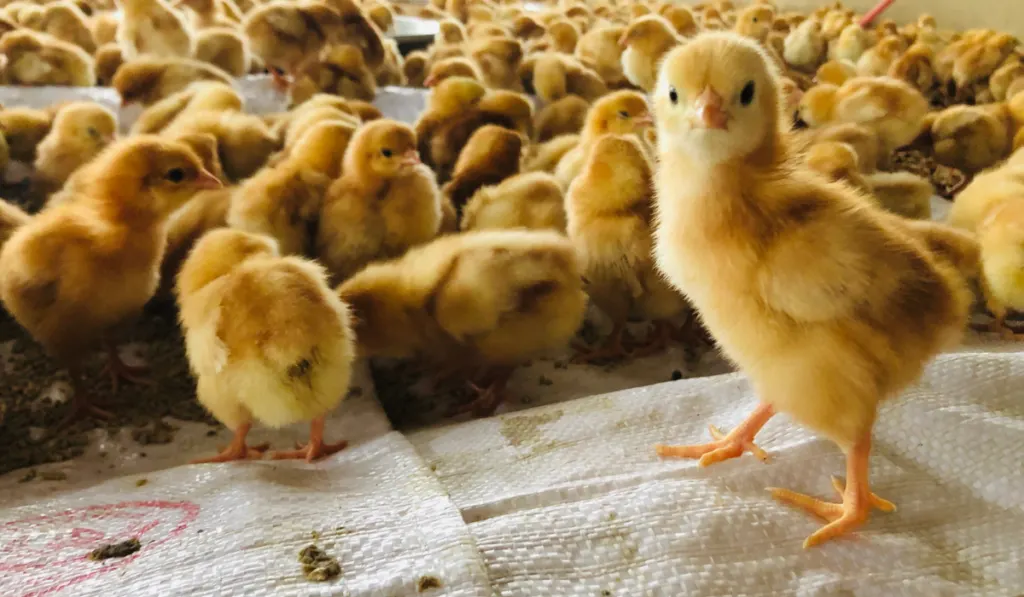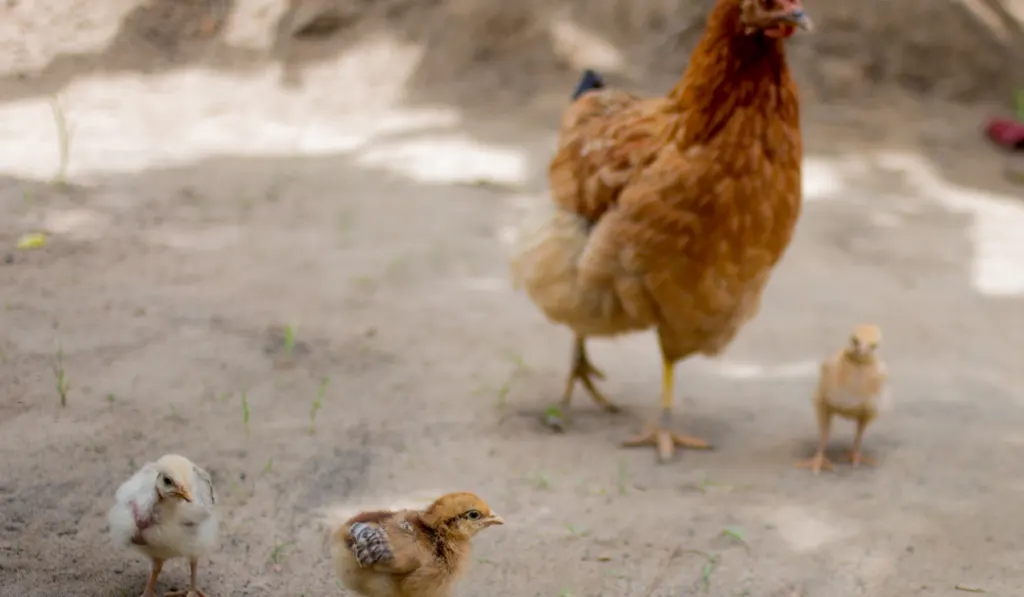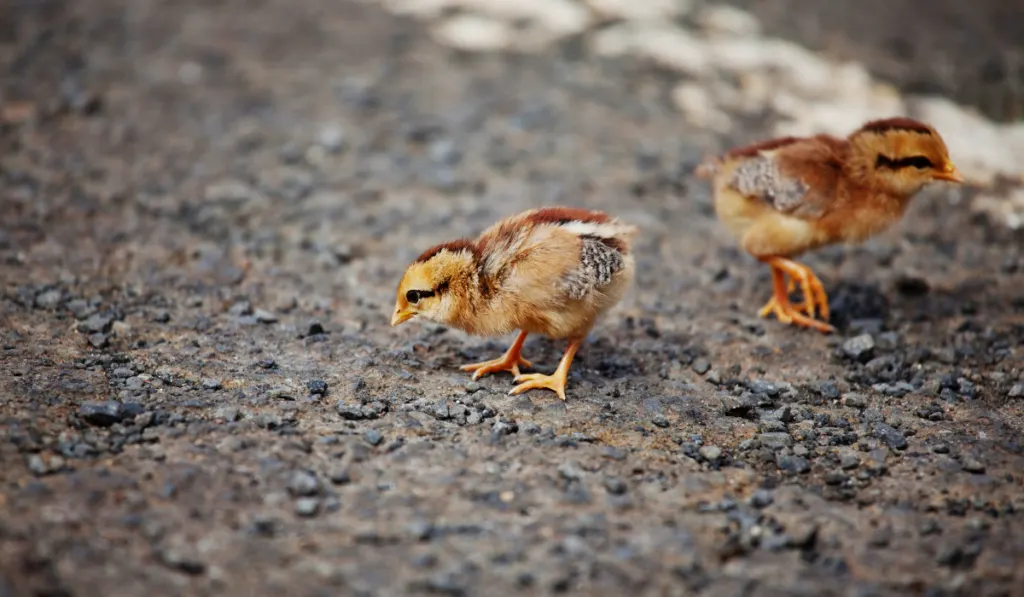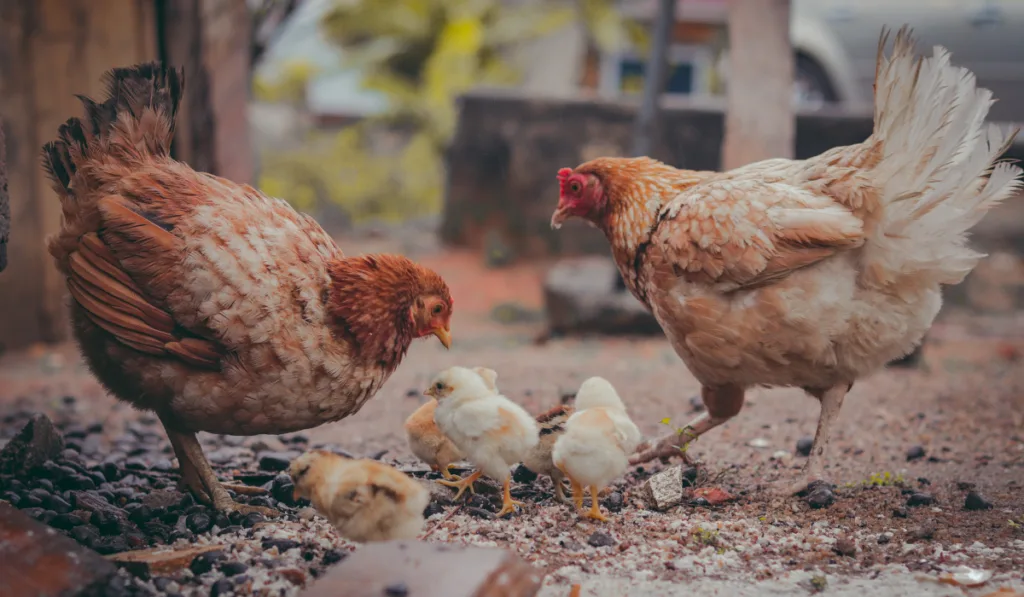Chicks are so adorable and fluffy! You can’t wait for those eggs to hatch so you can hold them and cuddle with them. Like a newborn baby, there is a period where the mother protects them from outside exposure.
So, nature expects the same nurturing methods to be applied to baby birds when it comes to chicks. So how long will it be before these little fluffballs can step out into the world? When can chicks move outside?
A mother hen usually takes her chicks out for their first steps in the world by the 2nd or 3rd day after hatching. However, if you keep the chicks indoors, the safest time to move them outside is between 4-6 weeks, depending on the weather and the environment you have prepared for them.

There are a few things to consider before moving your chicks out into the world. If their inside environment was pleasant, warm, safe, and cozy, you need to create a climate similar to the baby birds outside. The transition should not be traumatic with too many differences between the inside and the outside environments.
Table of Contents
How To Prepare The Environment For Chicks To Move Outside
Chicks, by nature, are strong enough to be taken outside by their mothers in the first two or three days of its life. However, if their mother lets them go out, it will be her protecting them as well. She will protect them from the cold using her feathers and body heat.
She will chase away other fowl or animals that approach her young, and she will make sure they get the nutrition they need to survive.
If we intend to keep these hatchlings indoors in our human environment, we will need to ensure that they are safe. The following factors are vital before the chicks can move outside;
Security
These baby birds are fragile and defenseless when they leave the nest for the first time. The best and most effective way to make a safe transition from inside to outside is by allowing the chicks outside time every day.
It would be best if you did this in an enclosure closed on all sides, including the top. There should be no way for them to escape or for predators to get to them.
This outside space should be very close to the area where they will eventually move to. It needs to be as smooth a move as possible to avoid any trauma or injury to the chicks.

Temperature And Weather
If chicks are kept in brooders indoors, it is easy to monitor the temperature, and the chicks are protected from harsh weather like rain, hail, or very hot, sunny days.
Allowing chicks to roam around outside helps them expand their diets and get some very needed exercise. The natural light, temperatures, and other elements help to toughen the chicks up when they finally move outside.
The temperatures that you are exposing them to needs to be monitored carefully. The table below indicates when chicks are ready to experience certain temperatures;
| Age Of Chicks | Appropriate Temperature | Comments |
| 0-7 Days | 95°Fahrenheit (35°C) | At this temperature, chicks can stay outside a bit longer and more often. |
| 8-14 Days | 90°Fahrenheit (32°C) | At this age, be careful of the brooder’s heating lamps because chicks start to notice their wings and try to fly. |
| 15-21 Days | 85°Fahrenheit (29.4°C) | The chicks are old enough to make short trips outside before they need warmth again. |
| 22-28 Days | 80°Fahrenheit (26.7°C) | Now you can start leaving the chicks outside a little bit more and for more extended periods, but be sure to keep a close eye on them and watch out for predators. |
| 29-35 Days | 75°Fahrenheit (23.9°C) | If the temperature of your home is 75°Fahrenheit, you can go ahead and switch off the heat lamps. Your chicks are finally starting to adapt to average temperatures. |
| 36-42 Days | 70°Fahrenheit (21°C) | If the weather is warm and sunny outside, you can start acclimating the chicks at this stage. |
| 6 Weeks + | Ready to leave the brooder! | Now that your chickens are ready to move outside make sure that their pets are free of any drafts. As they now have feathers, they are prepared to face natural weather conditions. |
Territorial Counterparts (Other Birds)

If you have larger chickens in the environment where the chicks will move to, it is highly recommended that you keep them separated from the bigger chickens until they are approximately 10-12 weeks old.
Also, keep in mind that the older chickens will try to bully the young ones. Unfortunately, that is part of nature. Animals will establish their dominance.
When you first move the chicks outdoors, feed them separately. The older chickens will step on or peck at the chicks if they try to eat before they do.
Remember, you cannot control nature. The larger birds will chase and peck at the little ones, but that is also how they learn to toughen up.
By the age of 10 –12 weeks, the chicks will be almost fully feathered and fully grown. This is an ideal time to allow them outside to join the rest of their farm family.
How Do You Safely Introduce Your Chicks To The Rest Of The Flock?
It is a known fact that chickens are serious about their pecking order. If your chicks aren’t correctly introduced into the rest of the group, you will end up with older chickens terrorizing the younger ones.
Just like humans, chickens have a kind of hierarchy, especially when it comes to feeding time.
Bigger chickens, mainly roosters, are known to become so aggressive toward new chicks that they kill them. If you know you will have new hatchlings, it is essential to have only one rooster for every 12-15 hens.

The first time you let your new chickens meet the older ones, make sure you have time to be present. You could even throw some treats, showing the bigger chickens they will get food and don’t need to “kill” for it.
Apart from monitoring and observing their first meet and greet, ensure there are enough bowls of water and food for all to share. If you have one hen or rooster that is too rough or aggressive, remove them for a few days and keep them in a dog crate.
By the time you release them, they will be obsessed about pecking and would have forgotten about the new chicks.
In Conclusion
All we want is to ensure that our chicks are happy, warm, and safe. Although you cannot protect them 24/7, you can provide the best environment you possibly can for them.
It is the same as having to care for an innocent and defenseless baby. They are incapable of doing anything for themselves and rely on us for their ultimate survival.
So, it will take some hard work and dedication, but as you see them grow up into healthy chickens, you will know that it was all worth the effort.
But also consider that even though it is great that you are taking these chicks “under your wing” to prepare them for the world, remember that hens make outstanding mothers.
They are some of the most protective species when it comes to protecting their young. Even if it might seem like the best idea to keep the chicks indoors to protect them, try to leave them with their mother next time.
You will soon find the beauty of nature taking its course, and you will realize that even without your help, those little chicks can withstand the impossible with the use of mother nature.
Resources
- https://backyardpoultry.iamcountryside.com/feed-health/when-can-chicks-go-outside
- https://ourinspiredroots.com/introducing-new-chickens-to-your-flock/
- https://www.backyardchickens.com/threads/big-chickens-killing-little-chicks.1200760/
- https://www.bing.com/newtabredir?url=https/findanyanswer.com/why-is-my-hen-pecking-her-chicks
